When you live in a 200-year-old house, you would do well to give it a thorough inspection every few years. Rap on the walls, pull down some old wallpaper, climb into the attic, and get down into the crawl space. Check the roofing, check the exterior walls, check the foundation. You are looking for signs of rot: decay, mold, insects, rodents, or just plain aging. With luck, you find one or two small problems, you patch them up, and all is well. Unfortunately, sometimes all is not well. Sometimes, you find signs of major and irreparable decay. In those cases, and as painful as it may be, you must be prepared to tear the house down and start anew. Anything less would be a lost cause, an act of utter futility.
America today is a 245-year-old house—a grand mansion with many rooms, situated on a wonderfully vast and glorious estate. From the outside, from a distance, it still looks nice: glitzy, glamorous, wealthy, powerful, exciting. It still carries much from its well-intentioned (if flawed) beginnings. But our inspection proves otherwise. When we rap on the walls, or get up in the ceiling, or crawl down to the foundations, we are shocked to find signs of widespread and irreparable decay. The main timbers supporting the building are rife with termites; the roof is leaking; the foundation is cracked, the sands beneath are eroding, and all manner of vermin are running wild, both above and below. In short, it is a horrible mess. We try to plaster over holes here and there, and slap on some new paint once in a while, but the rot inevitably shows through. By any reasonable accounting, the building is on the verge of collapse. It may come down on its own, or we can be proactive and take it down, but down it will come.
Any viable nation is not only an edifice; it is a living entity. It lives and breathes with the people in it. Our house is a living house; but sadly, it is terminally ill. A combination of old age, disease, neglect, and poor hygiene have put it in a terrible state, one that is evidently beyond any hope of recovery or repair. The house must come down; America must die—in order for a new house, a new nation, to arise. Such is life.
It is worthwhile, then, to review my brief ‘inspection report’ of the American nation, and to diagnose the ailments that we are currently enduring. If I am able to get down to root causes, this will naturally lead to some prescribed courses of action that we can take, both near-term and for the longer haul. No one wants to live in a rotting house. No one wants to live in a decaying nation. No one wants their children and grandchildren to grow up in such conditions. We have better options.
At the highest level, my inspection report finds two major, and related, areas of concern: (1) a false notion of human equality, and (2) misplaced faith in the doctrine of democracy. Further analysis shows that these two aspects have been ruthlessly and malevolently exploited by a potent Jewish lobby to maximize benefit to themselves. In what follows, I will attempt to outline the nature of this far-reaching and deep-rooted crisis, and to suggest some ways forward.
The False and Destructive Concept of Equality
In 1927, and four years before he penned Brave New World, famed writer, thinker, and “casual anti-Semite” Aldous Huxley published a compelling little book called Proper Studies. It opens with an essay titled “The Idea of Equality.” The very first line reads as follows:
That all men are equal is a proposition to which, at ordinary times, no sane human being has ever given his assent. (p. 1)
Doctors, editors, bureaucrats—any person, in any walk of life, displays evident and obvious inequalities, says Huxley. People are different in every way imaginable: skills, abilities, interests, intelligence, appearance, character. Everyone acknowledges this, and yet at the same time they also want to insist on the essential and intrinsic equality of humans. Hence does Huxley write of the human mind’s “almost infinite capacity for being inconsistent.” He then describes the basic axiom at work:
Politicians and political philosophers have often talked about the equality of man as though it were a necessary and unavoidable idea, an idea which human beings must believe in, just as they must, from the very nature of their physical and mental constitution, believe in such notions as weight, heat, and light. Man is “by nature free, equal, and independent,” says Locke,[1] with the calm assurance of one who knows he cannot be contradicted. It would be possible to quote literally thousands of similar pronouncements. (p. 2)
He identifies the original source of this fallacy in Aristotle, whose metaphysical assumption of a human essence (as “the rational animal”; Nicomachean Ethics I.8, 13) implies a sort of equality among the human species. Against Huxley, we can argue that this does not quite follow; the existence of a common and distinctive quality of all humans need not imply their social, political, or existential equality, any more than the fact that all material objects have mass imply that they all have the same weight.[2] Huxley also fixes some blame on Descartes, but again, this is perhaps an exaggerated claim. In Discourse on Method (1637), Descartes writes:
Good sense is the best distributed thing in the world. … It indicates that the power of judging well and of distinguishing the true from the false—which is what we properly call ‘good sense’ or ‘reason’—is naturally equal in all men. … [A]s regards reason or sense, since it is the only thing that makes us men and distinguishes us from the beasts, I am inclined to believe that it exists whole and complete in each of us.[3]
Even if we allow that reason is equal in all—a highly dubious assertion, to say the least—it still does not imply political, social, or moral equality.
More to the point, Huxley cites Christian doctrine and the position of the Church. Even granting a “brotherhood of men” under Christ, “the brotherhood of men does not imply their equality.” He continues: “Neither does men’s equality before God imply their equality as among themselves.” Even if God, from his divine and lofty standpoint, views us all as equals, any putative inter-human equality “is entirely irrelevant”.[4] It is rather like us viewing all ants or mice as identical when in fact they all recognize and acknowledge vast differences among themselves.
All this bodes ill for the “religion of democracy,” says Huxley (and as I will elaborate). Its “primary assumption” is that “all men are substantially equal.” If the equality falls, so too falls democracy. He summarizes concisely:
The historical and psychological researches of the past century have rendered the theory which lies behind the practice of modern democracy entirely untenable. Reason is not the same in all men; human beings belong to a variety of psychological types separated from one another by irreducible differences. (p. 12)
Science, anthropology, philosophy, and common sense all come to the same conclusion: human equality is a fallacy, and any political ideology based on that notion is doomed to failure.
Huxley, of course, was hardly alone in his condemnation of a claimed human equality. Nietzsche viewed the idea with greater contempt and wrote in more scathing terms. We find, especially in Beyond Good and Evil, a stunning repudiation of the concept. His elaborations on the “order of rank” among men, the “instinct for rank,” the “noble soul,” and the necessity for human greatness, pervade the work. A few examples will have to suffice:
Men, not noble enough to see the abysmally different order of rank, the chasm of rank, between man and man—such men have so far held sway over the fate of Europe, with their “equal before God,” until finally a smaller, almost ridiculous type, a herd animal, something eager to please, sickly, and mediocre has been bred, the European of today. (sec. 62)
The highest and strongest drives, when they break out passionately and drive the individual far above the average and the flats of the herd conscience, wreck the self-confidence of the community, its faith in itself, and it is as if its spine snapped. Hence just these drives are branded and slandered most. High and independent spirituality, the will to stand alone, even a powerful reason are experienced as dangers; everything that elevates an individual above the herd and intimidates the neighbor is henceforth called evil; and the fair, modest, submissive, conforming mentality, the mediocrity of desires attains moral designations and honors. (sec. 201)
Every enhancement of the type ‘man’ has so far been the work of an aristocratic society—a society that believes in the long ladder of an order of rank and differences in value between man and man. (sec. 257)
The concept of equality is ultimately destructive because it declares, not only that no one is worse than anyone else, but more importantly that no one is better than anyone else—yes, that no one can be better. True self-betterment and self-enhancement become impossible if we are all equal. No matter what you do, you will still be only, and always, equal to the very least among men. This doctrine is not merely false; it is utterly contemptible and destructive of higher aims and goals. It means the death of humanity. Where we do not ascend, we decline; this is Nietzsche’s basic outlook. Sadly, it conforms to the actual world in which we live today.
In the final passage above, Nietzsche points to a central fact and thus to a possible solution. If every improvement to humanity and to society has occurred in aristocratic societies—that is, rule by the best—then we ought logically to use those as our model. Societies that are capable of sorting men into lesser and greater types, and to do so effectively, are the drivers of human evolution. They strive for greatness, and they create greatness. Even the smallest steps in that direction—such as were taken by Hitler in his National Socialist Germany—would be such an improvement over the present day that any nation even attempting it would likely flourish spectacularly; and in fact, this is precisely what happened in Germany, beginning in 1933. The rest of the equality-obsessed, Jewish-inspired world was so aghast that they were compelled to drive the remaining industrial nations against Hitler and to destroy him, so fearsome was the prospect of his success.
Still, entrenched myths die hard. We in the US have our treasured Declaration of Independence, which declares as “self-evident”—with the calm assurance of those who know they cannot be contradicted—that “all men are created equal.” As we know, this was disingenuous at best. For one, they indeed meant ‘men,’ given that women could neither vote nor hold office. And they meant ‘White men,’ given that all the Founders were White Anglo-Saxons, and many were slaveholders or otherwise endorsed slavery. Hence that famous phrase really meant “all White males are created equal”—though even that is demonstrably untrue, as I have argued.
Original Democracy
Huxley had it exactly right: support for modern democracy is in fact more of a belief system, or even a faith, than something grounded in history, reason, and philosophy. Like many other religions, democracy derives from a core of historical truth—here, in ancient Greece—that was then altered beyond recognition by an accretion of layers of myth, lie, and corruption. Today we have the belief, the faith, by all sides, “left” and “right” alike,[5] that democracy is an unquestioned virtue, that it must be defended at all costs, and that it must be spread to the world, even at the point of a gun. This is a fundamental political error, founded on an erroneous and detrimental conception of human equality; it must be overcome if we are to survive in the long run.
Democracy wasn’t always a religion. At one time, at the beginning, it was a rational and effective (though not unproblematic) means of self-government. Let’s take a minute to examine the original democracy of ancient Greece to see what worked and what did not.
Athenian democracy was a remarkable institution, and remarkably different than what passes for democracy today. To begin with, the population of the state (or polis) was small—it constituted only some 300,000 people at its peak, which included many slaves and foreigners. By modern standards, this seems tiny but, for the time, it was extremely large. Of this number, the only formal citizens were the adult native-born males, numbering perhaps 30,000, or just 10 percent of the population. These citizens—the demos, the people—were the formal basis of political power, rather than some ruling wealthy elite (also known as oligarchs or plutocrats), or some tyrannical dictator, as could be found in other Greek states.
The democratic system, inaugurated by Cleisthenes around 500 BC, functioned in a very different way than we might expect. For one, there were no elections; all leadership positions (apart from the military) were chosen by lot, at random, from among the citizens who had put forth their names. This included even the leader of the Assembly—the collected body of citizens—who was effectively the president of the nation, though without much formal power. The Greeks had invented a device called a kleroterion into which names were randomly inserted on small tokens; colored dice were then deployed to select names randomly and fairly from among the various tribes or families. The system had several virtues: immediate results, no costly or corrupted election campaigns, fairness, transparency, and an equal involvement of all concerned. The Greeks clearly had to be nice to all their fellow (Athenian male) citizens, any one of whom could someday have a position of prominence.
Secondly, there were no representatives. Athens was a famously direct democracy. All interested citizens gathered on a large open hilltop, called the Pnyx, roughly once per month, to listen to the issues of the day. When the time came for decisions, a very public show of hands determined the outcome. Even the gravest of matters, such as going to war, were decided this way. This is all the more striking when we consider that the army was composed of the very men who had themselves just voted for war. In other words, when you voted for war, you personally went to war. And many never returned. We can only imagine a similar situation in America today: that the Congressmen and women who support the next illegal and unjust foreign war[6] would be compelled to be on the first combat plane into the warzone. I suspect that we would have very few wars indeed.
In sum, Athenian democracy was small, direct, accountable, and transparent. The wealthy elite had very little power to steer events in their favor. The citizenry comprised only native men; foreigners had literally no voice in the state, even though they outnumbered the actual citizens by a factor of two or three. Greek democracy was thus a racial (White European), ethnic (Athenian), and gendered (men only) system of rule. And it worked incredibly well; it produced and sustained the brilliant Athenian culture that we know today.
Two Famous Critics
For all that, the system had some harsh and prominent critics—notably, Plato and Aristotle. Plato had two main complaints against democracy: First, he asked, why should all the citizens get to vote on key decisions? Why are they all treated as equals, one vote per man? This is illogical and counterproductive. Even in Athens, they had their share of dunces, dimwits, and degenerates. Why let these men vote? Why not let only the best, the wisest, vote? For that matter, why have votes at all? Why not just determine who are your wisest few, and let them rule? This was Plato’s vision of an aristocracy, the optimal form of government. It is, at least in theory, far superior to anything like a democracy.
Plato’s second concern was, ironically, with freedom itself. In a democracy, since “the people” rule, anything goes. Whatever the people want, the people get. And the people—the masses—rarely want the kinds of things that they should want, namely, virtue and discipline. Rather, they want to have fun: they want to do one thing one day, and something else the next, as it suits their fancy. They are ‘free,’ after all. They want to play games, engage in various petty amusements, fill their bellies, get drunk, and so on. As it was then, so it is now; human nature has scarcely changed in two millennia.
Plato is scalding in his attack. The “democratic man” is inundated by all manner of trivial and detrimental desires. True and deep thoughts are driven from his soul, and “false and boastful conceits and phrases mount upwards and take their place” (Republic Bk 8; 560c):
And so the young man returns to the country of the [pleasure-seeking] lotus-eaters, and takes up his dwelling there in the face of all men. … There is a battle and [the false and boastful words] gain the day, and then modesty, which they call ‘silliness’, is ignominiously thrust into exile by them, and temperance, which they nickname ‘unmanliness’, is trampled in the mire and cast forth. They persuade men that moderation and frugal spending are vulgarity and meanness, and so, by the help of a rabble of evil appetites, they drive them out.
And when they have emptied and swept clean the soul of him who is now in their power and who is being initiated by them in great mysteries, the next thing is to bring back to their house insolence and anarchy and waste and impudence in bright array, having garlands on their heads, and a great company with them, hymning their praises and calling them by sweet names. Arrogance they term ‘good-breeding’, and anarchy ‘freedom’, and waste ‘magnificence’, and impudence ‘courage’. And so the young man passes out of his original nature, which was trained in the school of necessity, into the freedom and libertinism of useless and unnecessary pleasures. (560d-e)
And if wiser thoughts come calling, and if they struggle for predominance in his soul, he becomes confused; “he shakes his head and says that they are all alike, and that one is as good as another.” He has lost the ability to judge and to discriminate, which degrades his entire life:
His life has neither law nor order; and this distracted existence he terms ‘joy’ and ‘bliss’ and ‘freedom’; and so he goes on… [H]e is all ‘freedom’ and ‘equality.’
Hence the democratic man. His precious freedom, given unrestrained license and lack of discipline, devolves into mindless and confused pleasure-seeking. He believes he has freedom, and he believes in equality—but this is a sham; it is a false equality and the freedom of a shallow and vapid libertine. Plato sums up the situation on democracy with one of the most striking sentences in the Republic:
These and other kindred characteristics are proper to democracy, which is a charming form of government, full of variety and disorder, and dispensing a sort of equality to equals and unequals alike. (558c)
“Charming” and “disordered” democracy, so “fair and spangled,” is all show and no substance. It encourages undisciplined, unvirtuous lives of hedonistic pleasure. And most importantly, it “dispenses a sort of equality to equals and unequals alike.” Such a democracy, he says, can only lead in turn to the lowest form of government, tyranny.
I haven’t the space to elaborate, but in short, Aristotle basically agreed with this analysis. He identified three primary forms of government, each of which had good and bad versions. In descending order, the three good systems are monarchy (rule by one), aristocracy (rule by a small and wise few), and a ‘constitution’ (conditional rule by many). The distorted or bad forms of each of these are tyranny, oligarchy, and democracy.[7] In this sense, for Aristotle, democracy is literally ‘the worst of the worst.’ It is rule by the poor and needy masses, not the best or noblest few.
Industrial Democracy
What, then, of democracy in the world today? We have variations on the democratic theme that are so remote from the Athenian original that they hardly deserve the same name. They have lost all the virtues of the original but retained all the vices. Democracy today has devolved into a crude perversion that I like to call industrial democracy. Its primary characteristics are these:
1) Representative (parliamentarian) system—no direct participation.
2) Universal suffrage—all adults can vote.
3) Multiracial—all races can vote.
4) Unlimited population size.
5) Financially corrupt—moneyed interests (especially Jewish) hold great sway.
On every point, this is opposed to the Athenian model. We vote, but typically only for a handful of pre-determined candidates or on a very limited number of referenda. Our representation is scaled down by a factor of thousands or millions; a state as large as California, with almost 40 million people, gets all of two senators.[8] And every half-witted, uneducated ignoramus gets his or her vote—people who vastly outnumber the educated and the wise. (And we wonder why the intellectual level of political campaigns is so low.) People of every race can vote, and they often do so in their own racial interest, thus guaranteeing a divided and conflicted government. Perhaps most critically, the original small size of the Athenian citizen body, some 30,000 individuals, now numbers almost 250 million—the number of eligible American adults.
The vast size and scale of representation ensures that billions of corrupting dollars flow through the system, distorting even the most virtuous lawmaker, and guaranteeing a flood of media confusion, propaganda, and “fake news.” Industrial democracy is rule by money: those with the most money, and the will to spend it, rule. In America, we know who leads this race: the Jewish lobby, which contributes at least 50% of Democratic campaign funds and at least 25% of Republican funds. Wealthy American Jews spend literally hundreds of millions on campaigns, ads, donations, and various other activities, all to influence the outcome in their favored direction.[9] The situation is comparable in the UK, Canada, France, and Australia, all of which have relatively large and wealthy Jewish populations.[10] The ancient Greeks—most of them, at least—would be appalled to see what their cherished democracy has come to.
As it is, we now have that which Plato predicted: democracy on the brink of degenerating into tyranny of various forms. We have tyrannies of the rich, tyrannies of the Judeocracy, and tyrannies of Big Tech, all vying for power, and all cooperating as needed to ensure that nothing like transparent and accountable government ever comes to pass. The main objective of the rich is to stay rich, and to maintain or grow the wealth gap between themselves and the masses; the larger the disparity, the more relative power they hold. The main objective of the Judeocracy, of the Jewish power-elite, is to weaken and damage the national psyche sufficiently, and to diversify and deplete the nation genetically, so that they can maintain maximum control without completely destroying the wealth-producing capacity of the economy. Under industrial democracy, the future is grim indeed.
America, sadly, has been completely subsumed by this pernicious and insidious form of government. The country is ruled by the lowest, most depraved, most incompetent individuals imaginable. At the same time, it is being flooded by the virtual scum of humanity—in July 2021 alone, over 212,000 arrests (“encounters”, in the government’s euphemistic propaganda) occurred at the southern border.[11] How many more evaded “encounter” and entered the country illegally, we do not know. And to these numbers we must add the “legal” immigration of large numbers of non-European, non-White individuals who inevitably change the character of the nation for the worse. The combined effect is dramatic. A recent study stated that the US now has an astonishing 44 million people who were foreign-born, of which about 75% are legal and 25% are illegal.[12] Nearly half of these millions were born in just five countries: Mexico, China, India, Philippines, and El Salvador. Surely not more than a percent or two of these 44 million are White. The grand edifice that is America is collapsing as we speak.
Therefore, it is time to accept reality and give up America for lost. Put away your flags, your pins, and all your red-white-and-blue paraphernalia. Toss out your MAGA hats; America will never be “great again.” Anyone who tells you otherwise is a liar or a fool. The country is rotting from above and below. Vermin are calling the shots from on high, and human detritus washes in over the borders. This was precisely how Ancient Rome fell. Such is the terminal stage of many an empire.
Looking Ahead
If this report on the fatal condition of America is close to the mark, it also suggests corrective actions that must be taken to regain a sane and stable civic life, at least for the White Euro-Americans who established and ran the country for most of its existence. The necessary actions are hardly a secret. The basic ideas are already floating around the Internet. Andrew Anglin, for one, was right on the mark in his recent essay on immigration. His conclusion:
The only way we are going to fix this [immigration] problem is through a two-fold solution: 1) Redrawing the borders of the country, and 2) Physically removing tens of millions of people. There is no situation where both of those things are not going to be necessary in the future.
He is absolutely right.[13] Those are two necessary, but not sufficient, conditions for the restoration of rational government among the White population today.
More specifically, my above analysis suggests the following steps: (a) Break up the existing United States into smaller, more cohesive, more homogenous, and more manageable units. (b) In these new units, encourage all non-Whites, and especially all Jews, to emigrate as soon as possible. (c) Discard the pernicious concept of human equality and replace it by a celebration of the higher, the nobler, and the best. (d) Replace industrial democracy with something like an aristocracy. Let me close by offering a few words of elaboration on each.
More and more people these days seem to be recognizing the desirability and the inevitability of secession of portions of the US, and the establishment of new, independent nation-states. In fact, as the nation continues to disintegrate, at some point people will have no choice; thus, it is better to plan now than to wait for some chaotic future breakdown.
Some of the current talk on secession has the right intent but is woefully weak and misguided. One can find articles like “Is America still our country?” and “The separation,” but these are pathetically half-hearted. Breaking up existing states but staying within America is a wholly insufficient form of secession. The “6 Californias” idea is very weak; “Greater Idaho” is well-intentioned but falls way short of the mark. None of these explicitly advocates breaking away from the US and forming new nations. Only full-blown secession can hope to get to the root of the problem. The reigning Judeocracy knows this, which is why they do everything in their power to discredit the idea.
Point (b) is mandatory for restoring effective and rational governance. Blacks, Asians, Hispanics, and Jews all have countries of origin; they need to return there with all due haste. After a short period of voluntary compliance, increasing pressure will need to be applied until they comply. Yes, Whites could theoretically return to Europe, except that Whites created and built up the present civilization (such as it is) of the USA, and thus have earned a right to stay and to evict the interlopers.[14] Native Americans were of course here before the White Europeans, and that precedence needs to be respected, such as via truly autonomous homelands. And since Blacks were forcibly brought here from Africa (with heavy Jewish involvement[15]), I would have no issue with assisting their return to Africa with subsidized travel arrangements, a small one-time cash payment, or with the use of political leverage in Africa to aid their repatriation. We can ease the transition, but out they must go.
The hardest to deal with will of course be the Jews. With their political clout, wealth, and bull-headed tenacity, they will be very hard to root out. The task is made all the more difficult because of the inability of our supposedly “conservative Right” to address the Jewish Question in a meaningful way. Most all prominent rightwing individuals and organizations flee from the Question like the devil from holy water. As I have noted elsewhere, Fox News and crew—Carlson, Hannity, et al—never explicitly mention Jews, never out them, and never criticize them in any way; Hannity in fact bends over backward to curry favor. Alex Jones never criticizes or outs Jews. Same with Jared Taylor. American Renaissance won’t deal with the Jewish Question in a serious way. Breitbart at least discusses them, but always in a neutral or positive light. The real critics are, sadly, few and far between; to reiterate what I wrote recently, we need to be extremely grateful for The Occidental Observer, Unz.com, National Vanguard, and people like Anglin, all of whom are willing to speak the hard truth on the Jewish Question.
Point (c) obviously follows from the above discussion. We must drop all talk of human equality and replace it with a promotion and celebration of human uniqueness and human greatness. This needs to be made explicit in common discourse, media, and school curricula. We need to celebrate and praise human genius while emphasizing the fact that most people are not geniuses and will never achieve greatness, but who can nonetheless have meaningful and valuable lives. When it is understood that humans never were, and never will be, equal, then all become free to achieve their full potential and, for those who succeed in bettering themselves, to reap the rewards of exceptional development. In a just society, exceptional individuals will earn additional rights, but they will also bear additional duties, compared to the lesser. “Equal” performance for the various subgroups of people—as distinguished by gender, age, socio-economic status, ethnicity, etc.—will never be expected or mandated. “Racial equality” will be a nonissue.
On the final point, it is clear that the hopelessly corrupt industrial democracy must go. We can also be confident that something like an aristocracy would be a vast (if imperfect) improvement, even as there is much leeway in the specific details. If we allow that “rule by the wiser” is superior to “rule by the masses,” then we have many ways to realize such a system. At the simplest level, we could retain elections for officeholders but permit only the wiser—smarter, more educated, more accomplished—individuals to vote. It could be very basic: require that voters earn a college degree, for example; or score above average on an IQ test; or distinguish themselves in some other relevant way (an exceptional athlete, by contrast, earns no right to a voice on political issues). The disenfranchised would not be made to feel inferior; rather, they would come to accept such a system as in the best interests of all.
At a more sophisticated level, we might move to adopt something like a Platonic education system, as laid out in the Republic. There he sketches a 50-year training program involving age-appropriate schooling, skills training, physical fitness, and practical experience that both educates the masses and serves as a filtering process to determine who the truly wisest and most capable leaders are. A series of pass-fail criteria progressively reduce the pool of eligible candidates, leaving, at the end, a mere handful of individuals who have repeatedly proven themselves under pressure. In a future aristocracy, a small pool of “the best” could be added annually to a kind of ruling congress who would then be unconditionally empowered to make and enforce all laws and policies. After a fixed term of governance, each individual would be compelled to retire in turn. Again, this is just one way of realizing such a system. Variations might include finding ways to identify and empower the truly exceptional individuals—or perhaps a single individual—and give them correspondingly exceptional powers to rule.
In any case, the system would need to be recognized by the vast majority of people as an effective and desirable solution. In this sense, it would retain a small flavor of traditional democracy. “Consent of the governed” can work, as long as the population is not too large and as long as we do not have to contend with competing racial minorities or Jewish financial corruption. But such consent is a far cry from universal suffrage or rule by the masses, which can never work, and which always degenerates.
Such is my basic outline of a path forward. Obviously, much more needs to be said. But it is a start, one that addresses the root causes of our present crisis.[16]
I close with this thought: To the extent that America ever was great, this is because, at the start, it was roughly modeled on the Athenian original. The early American government was gendered, racial, and ethnic—White males of a predominantly north European stock. And it stayed that way for nearly 100 years.[17] The celebrated American “diversity” at the beginning was a diversity among Whites: English, Scots, Irish, Dutch, Germans, and Scandinavians all would have been represented in those early years. Yes, America had significant numbers of Blacks and Jews from the 1600s, but they had limited or no political influence. Religion was of secondary importance. Yes, it was nominally a “Christian nation” at the start, but few among the Founders were deeply religious—Patrick Henry, Samuel Adams, and John Jay being the exceptions—and most were skeptical believers or deists, if not functional atheists.
Hence, early America prospered and flourished in spite of, not because of, Christianity; in spite of, not because of, Blacks and Jews; and in spite of, not because of, the principle of equality. Blacks, Jews, “equality,” and Christianity were millstones around the young nation’s neck. It is a testament to our initially gendered and racial governance that we accomplished so much in those early years, with such huge burdens to bear. Two centuries later, those millstones proved to be our ruination.
America is dying a slow and painful death. Let us euthanize the long-suffering nation, redraw the boundaries, rethink the guiding principles, and begin again.
===================================
Thomas Dalton, PhD, has authored or edited several books and articles on politics, history, and religion, with a special focus on National Socialism in Germany. His works include a new translation series of Mein Kampf, and the books Eternal Strangers (2020), The Jewish Hand in the World Wars (2019), and Debating the Holocaust (4th ed, 2020). Most recently he has edited a new edition of Rosenberg’s classic work Myth of the 20th Century and a new book of political cartoons, Pan-Judah!. All these works are available at www.clemensandblair.com. For all his writings, see his personal website www.thomasdaltonphd.com.
[1] Second Treatise on Civil Government (1690), chapter 8, section 95.
[2] And in fact, Aristotle’s later discussion of the “great-souled man” (Nicomachean Ethics IV.3) demonstrates conclusively that he believed in vast difference among men.
[3] The Philosophical Writings of Descartes, volume one, Cambridge University Press (1985), pp. 111-112.
[4] Indeed, explicit human equality exists nowhere in the Bible. Paul claims in Galatians (3:28) that “there is neither Jew nor Greek” under Jesus and that “we are all one in Christ Jesus.” But this only says that all are welcome into his nascent universalist church; it does not support the idea that all are equal. And more importantly, there are very good reasons for believing that Paul held to the most obnoxious form of Jewish supremacism, and thus did not believe in human equality in the least; see my essays “Christianity: The great Jewish hoax” and “Nietzsche and the origins of Christianity.”
[5] Though, as I have recently argued in “The problem with leftism,” both the Left and the Right are “fakes,” which explains why they both adhere to similar nonsense, and why they both supplicate to the Jewish Lobby.
[6] Actually, in America we don’t have wars anymore; we have “authorized uses of military force” or AUMFs. This is Congress’ cowardly way to kill others on behalf of their lobbyists and patrons without having to vote for an actual war.
[7] Politics III.7.
[8] It does get 53 federal representatives, but even here, each represents the interests of an average of 750,000 very diverse individuals.
[9] See my elaborations in “The problem with leftism” and “Confronting the Judeocracy.”
[10] I emphasize “relative.” Jewish percentages of these four nations range from 0.4 to 1.0%. Normally this should be inconsequential, but with wealthy and pernicious Jews, it poses substantial problems. The lesson here is that any nation seeking to free itself from the Jewish Lobby had best restrict Jewish numbers to something well below 0.1%.
[11] Of course, not all illegal immigrants are scum. But from everything we know, a very high proportion of them are from the lowest, least intelligent, and most criminal segments of humanity. And since virtually all of them are non-White, even the best will alter the nature of our traditionally White society.
[12] Though the actual number of illegals could be much higher than the presumed 11 million. One recent study argued that the true figure could be as high as 29 million.
[13] Now, if we could only get Anglin to drop his allegiance to the Judeo-Christian God and to that long-dead Jewish rabbi, he would be much better off.
[14] Yes, Black African slaves and Chinese coolies “built” portions of the early US. But they provided only the low-end brute labor, not the organizational or intellectual basis for the nation. To give them credit for building America would be akin to giving credit to the oxen and draft horses of the early pioneers.
[15] See Louis Farrakhan’s book The Secret Relationship between Blacks and Jews (3 volumes).
[16] Elsewhere I have argued that Hitler’s National Socialism can also be a model going forward. His nationalism created an ethnic-based sense of unity and purpose that far exceeded mindless patriotism, and his socialism served as an antidote to unrestrained finance capitalism. There are many good lessons to be learned there. Interested readers should start with my recent edition of Mein Kampf, and with my newly-reworked edition of Alfred Rosenberg’s classic, The Myth of the 20th Century.
[17] Black males were granted the right to vote in 1866, and women (of all races) in 1920.




 Priti Patel with the Board of Deputies and other Jewish supremacists
Priti Patel with the Board of Deputies and other Jewish supremacists
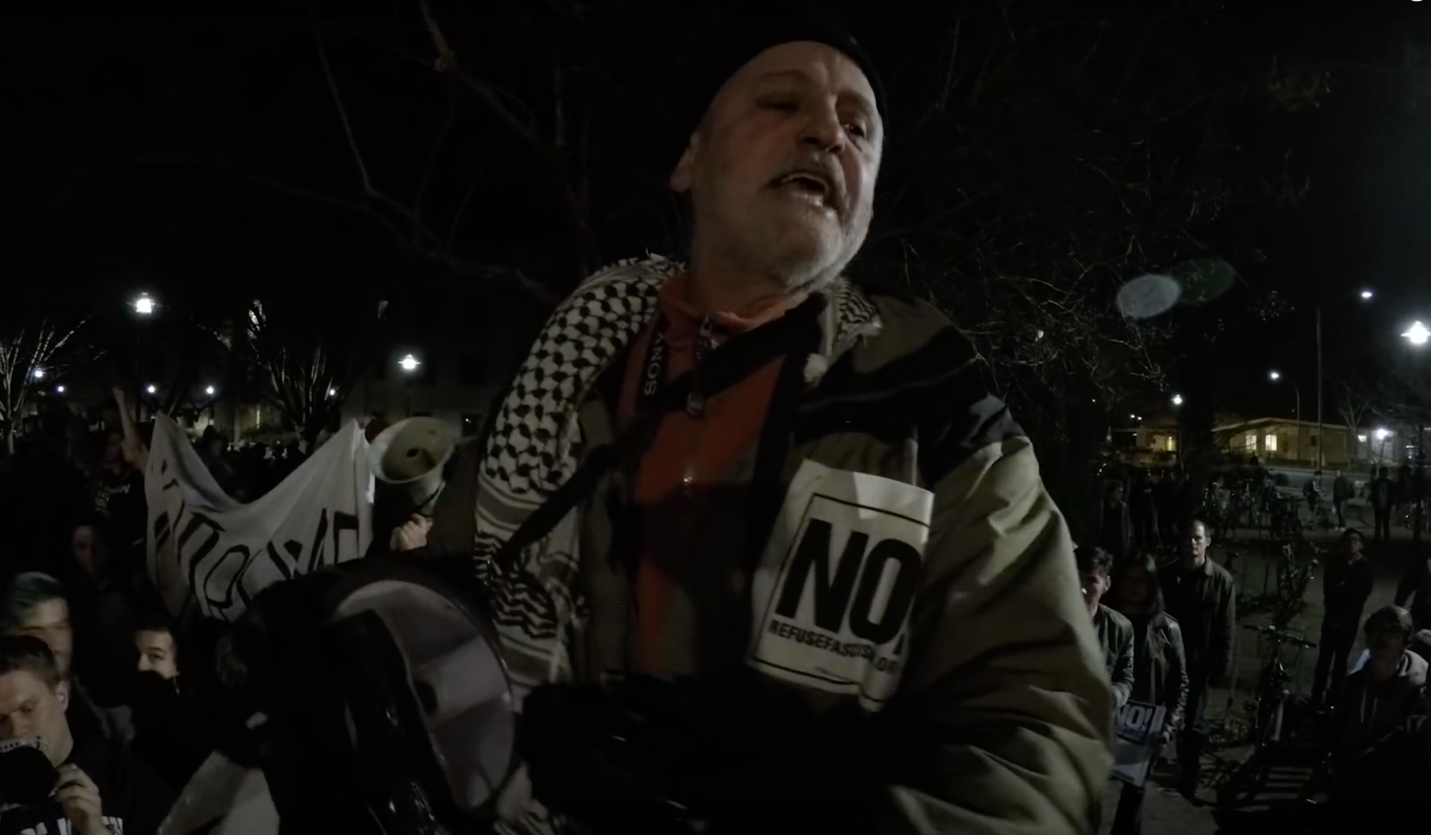


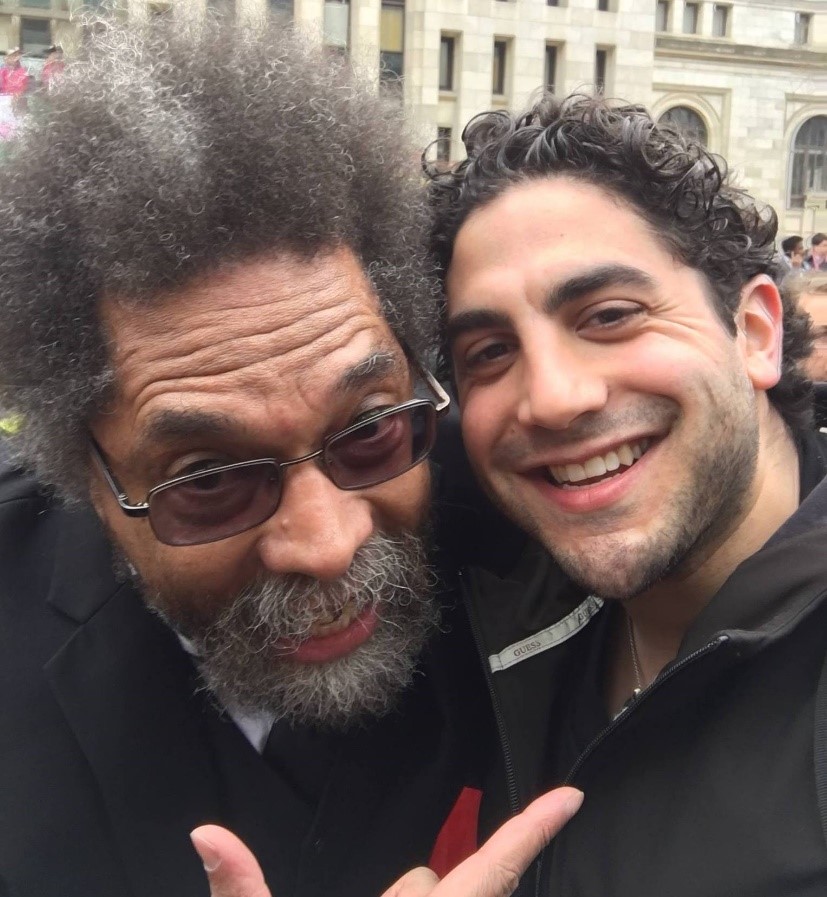





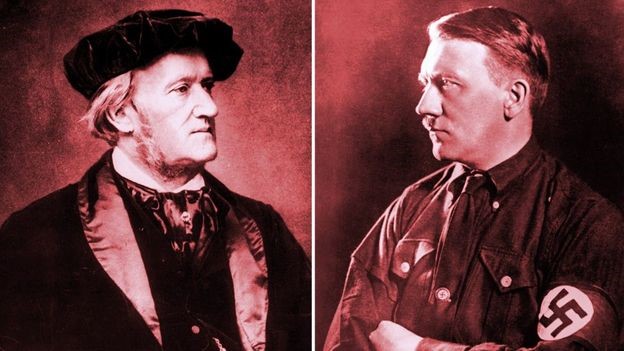
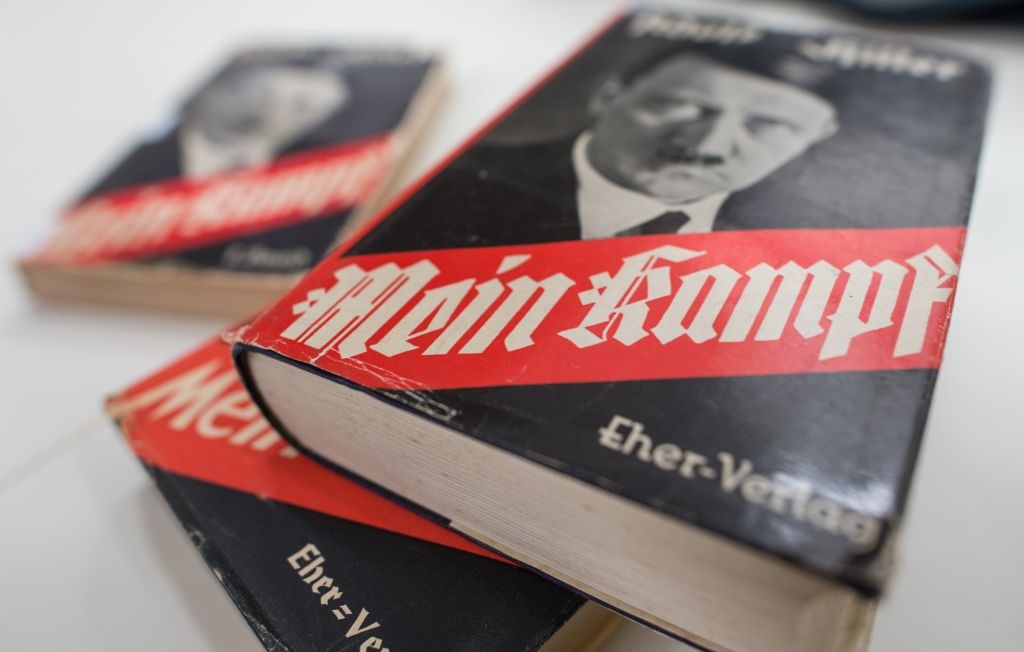
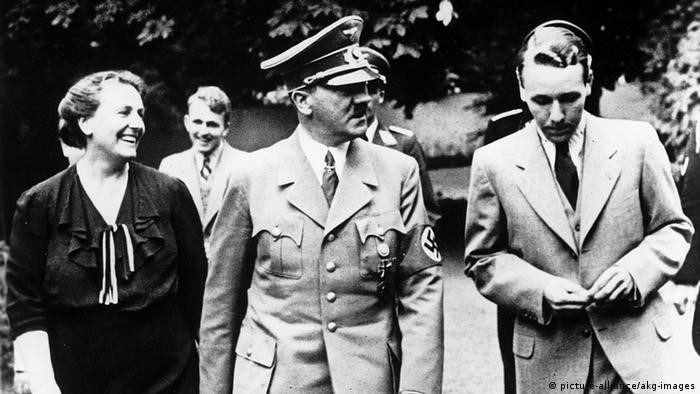 Wagner’s grandson and daughter-in-law with Hitler
Wagner’s grandson and daughter-in-law with Hitler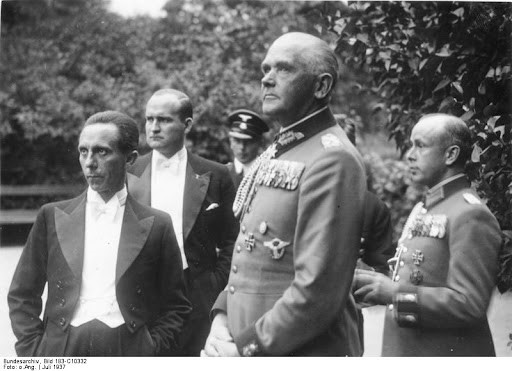 Joseph Goebbels attending the Bayreuth Festival in 1937
Joseph Goebbels attending the Bayreuth Festival in 1937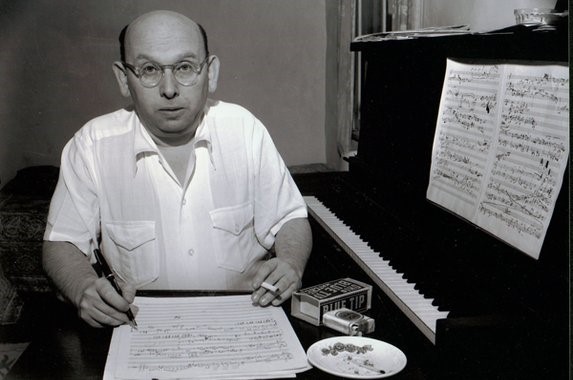 Jewish communist composer Hanns Eisler
Jewish communist composer Hanns Eisler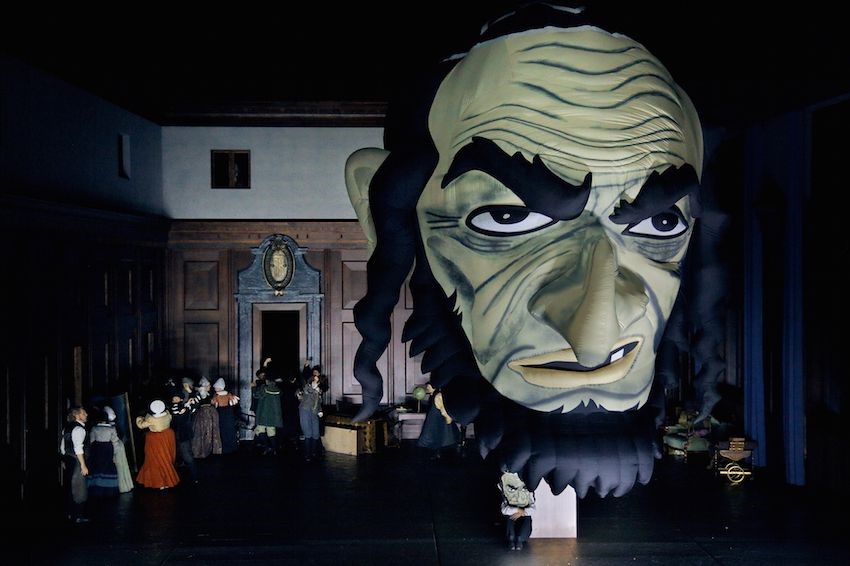
 Jewish Opera director Barrie Kosky
Jewish Opera director Barrie Kosky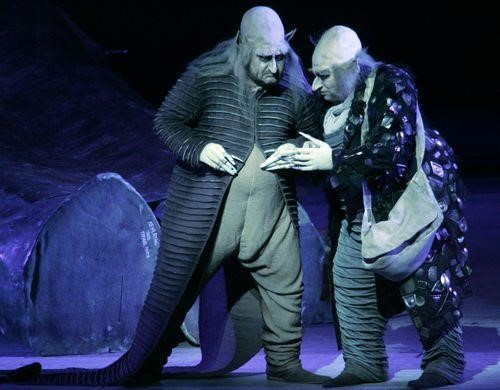
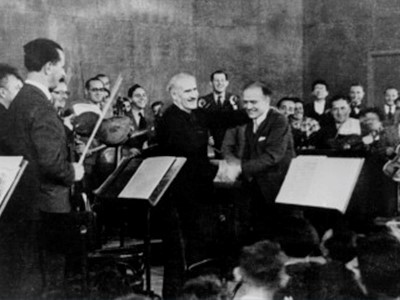 Arturo Toscanini with the Palestine Symphony Orchestra
Arturo Toscanini with the Palestine Symphony Orchestra
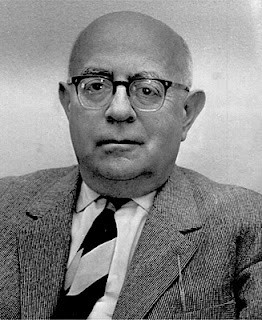
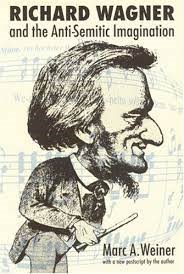
 Ludwig Geyer
Ludwig Geyer


